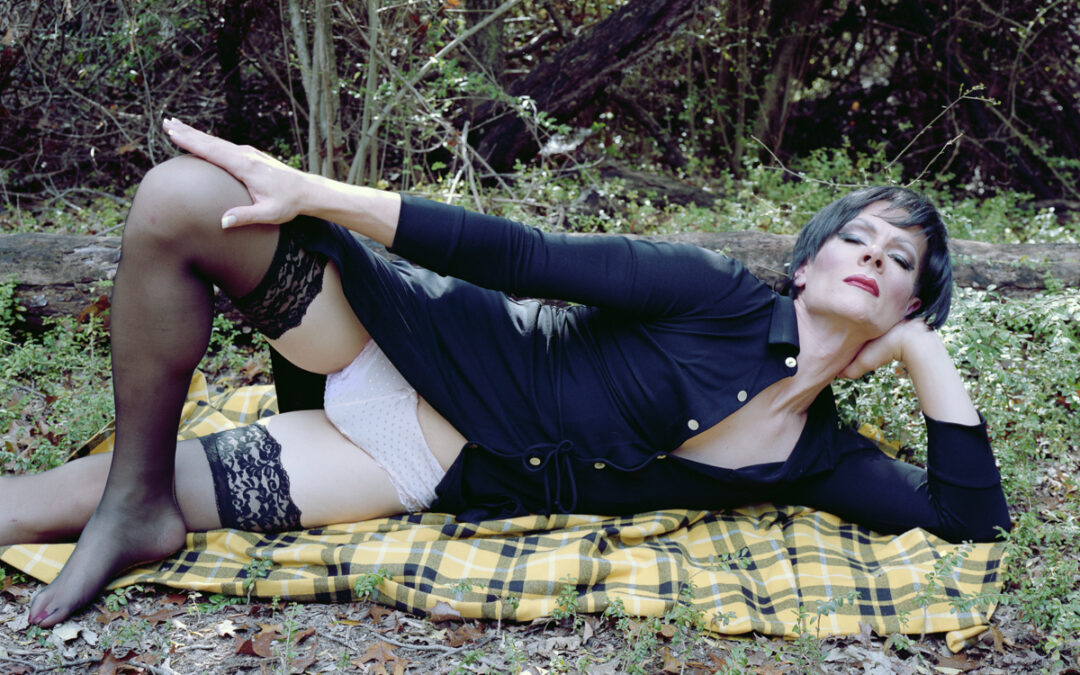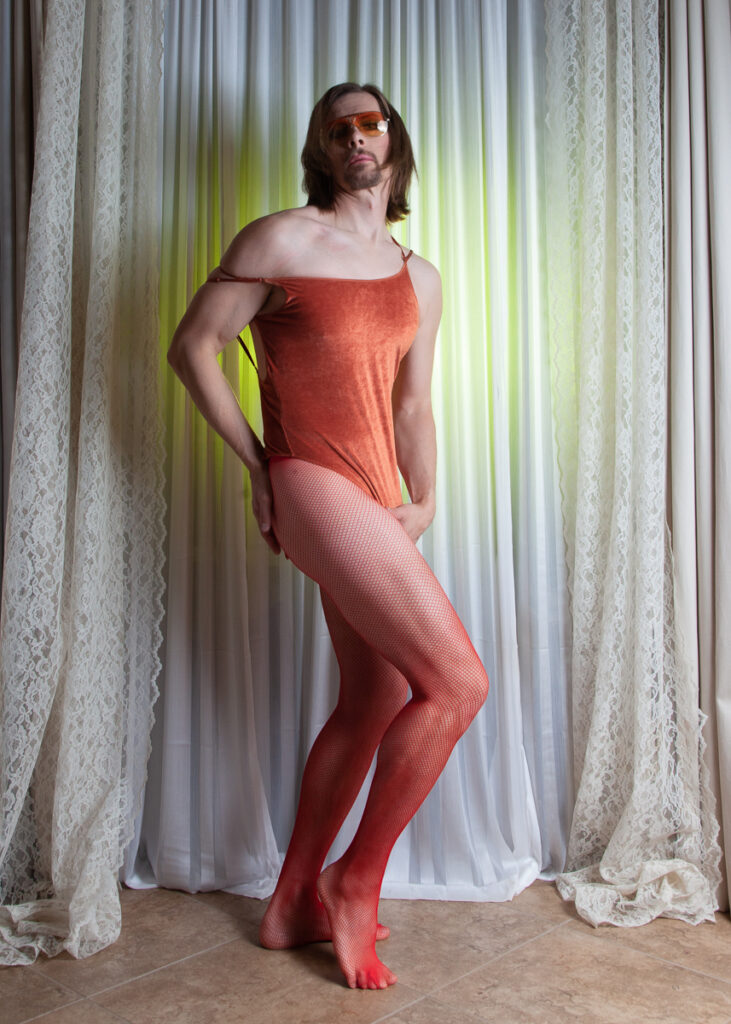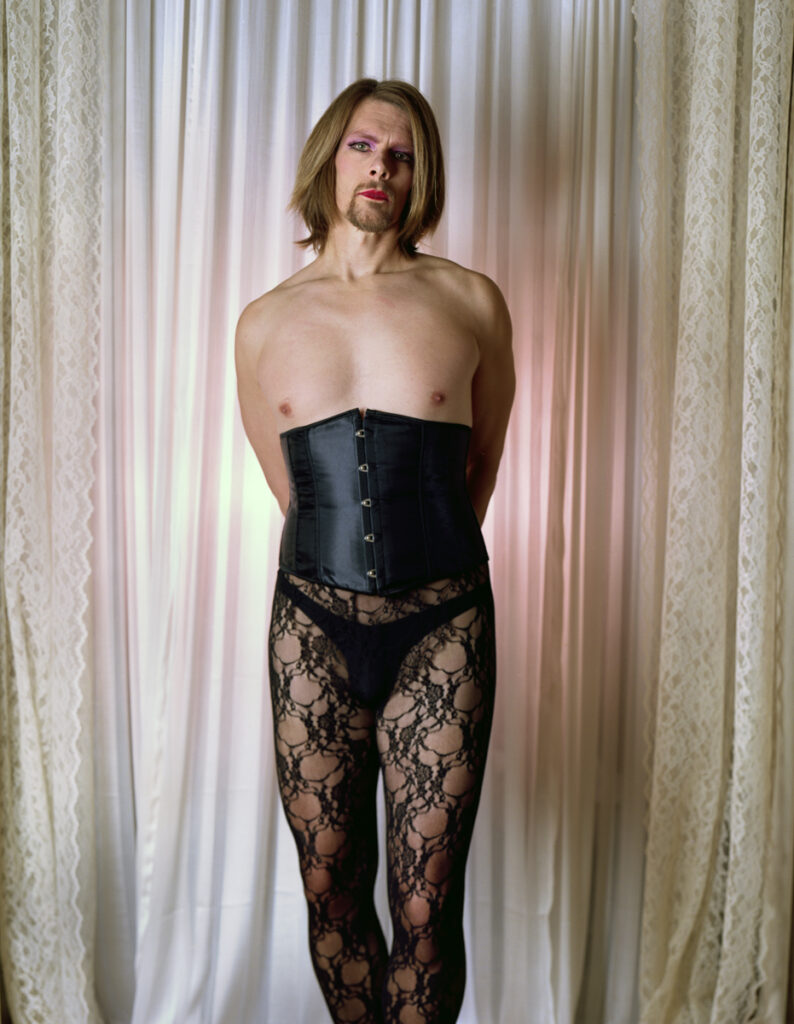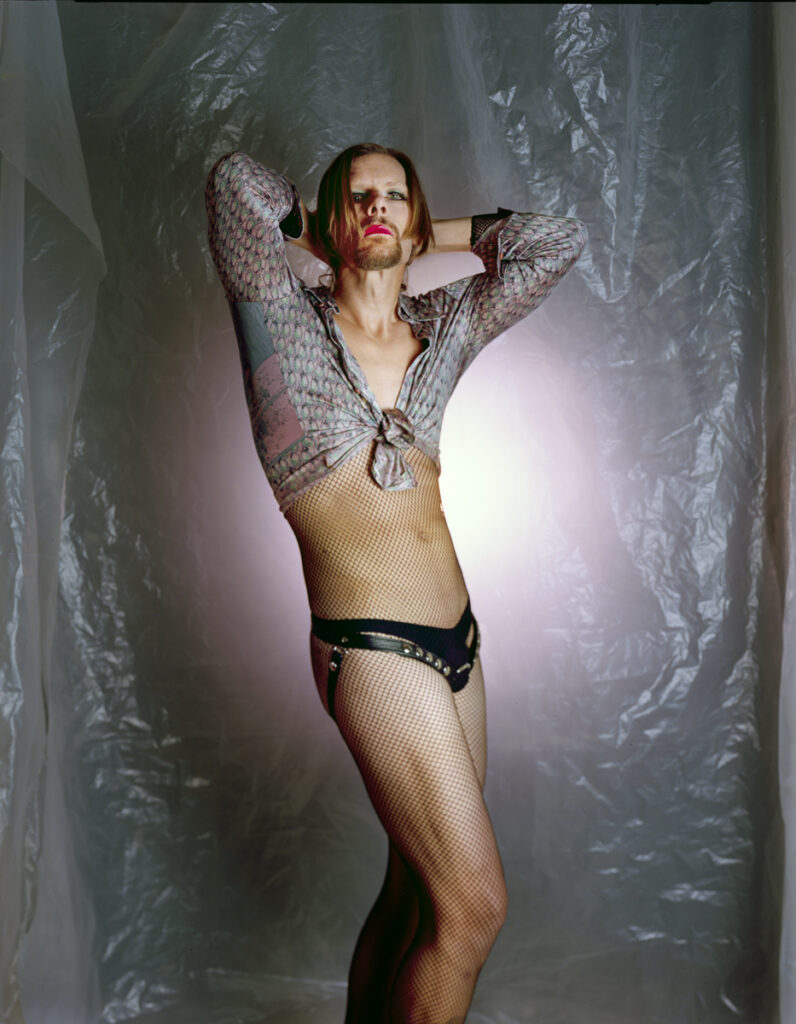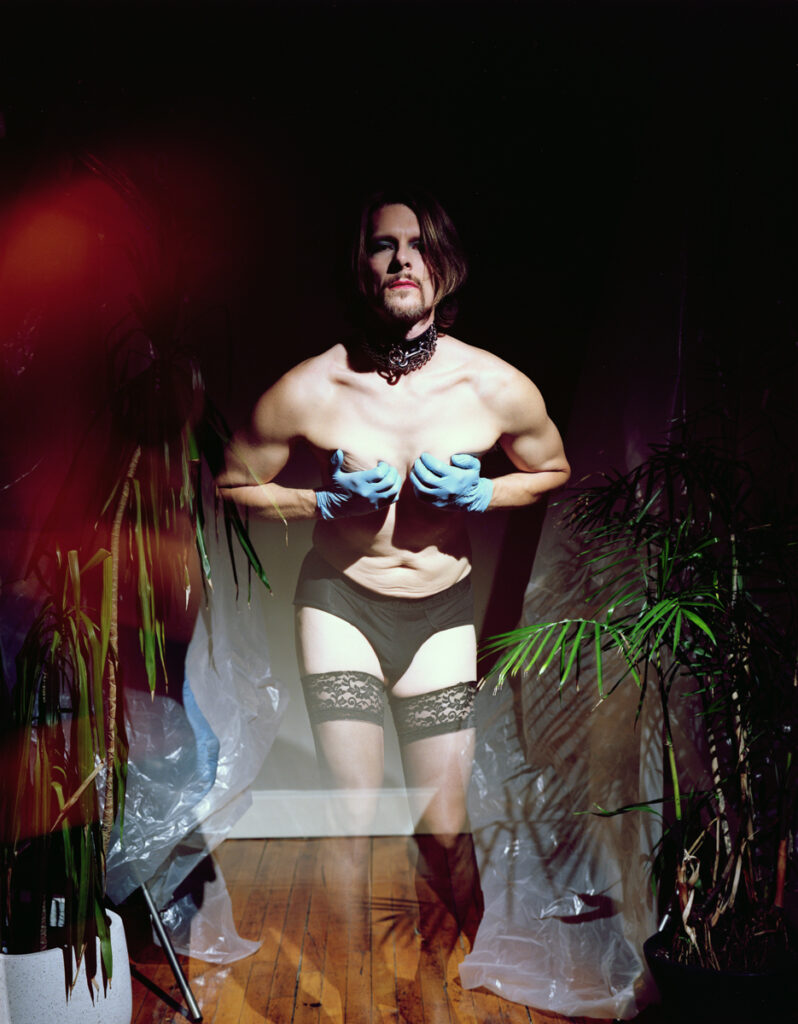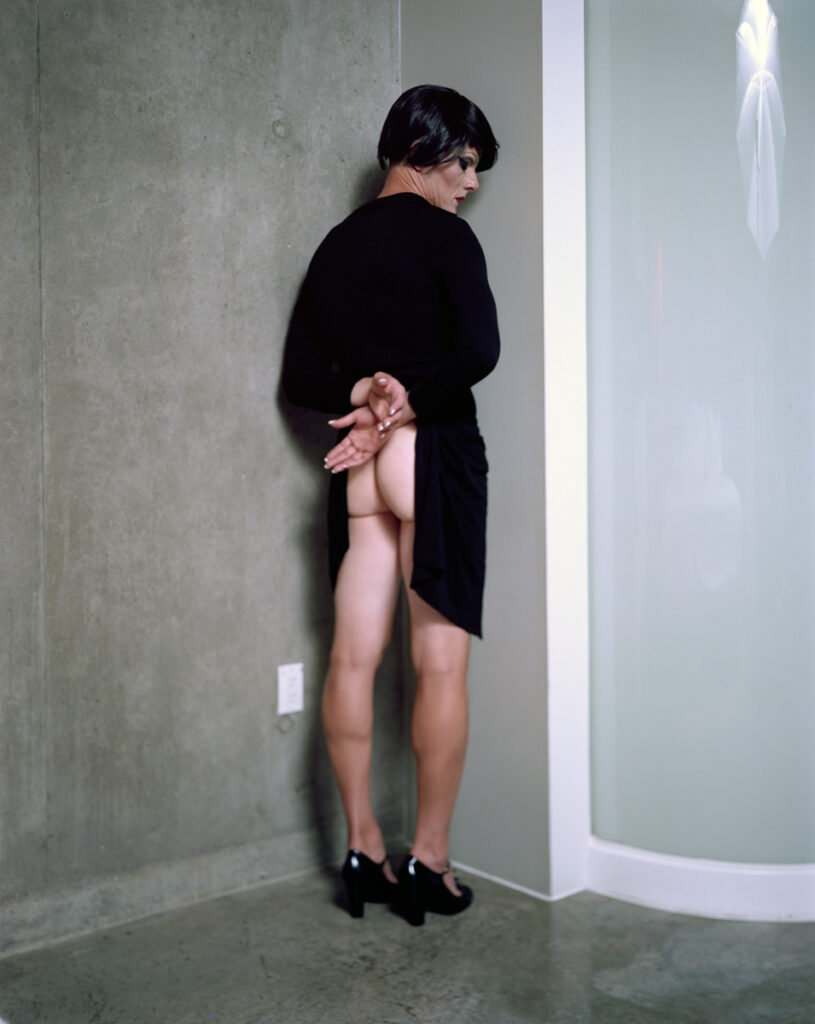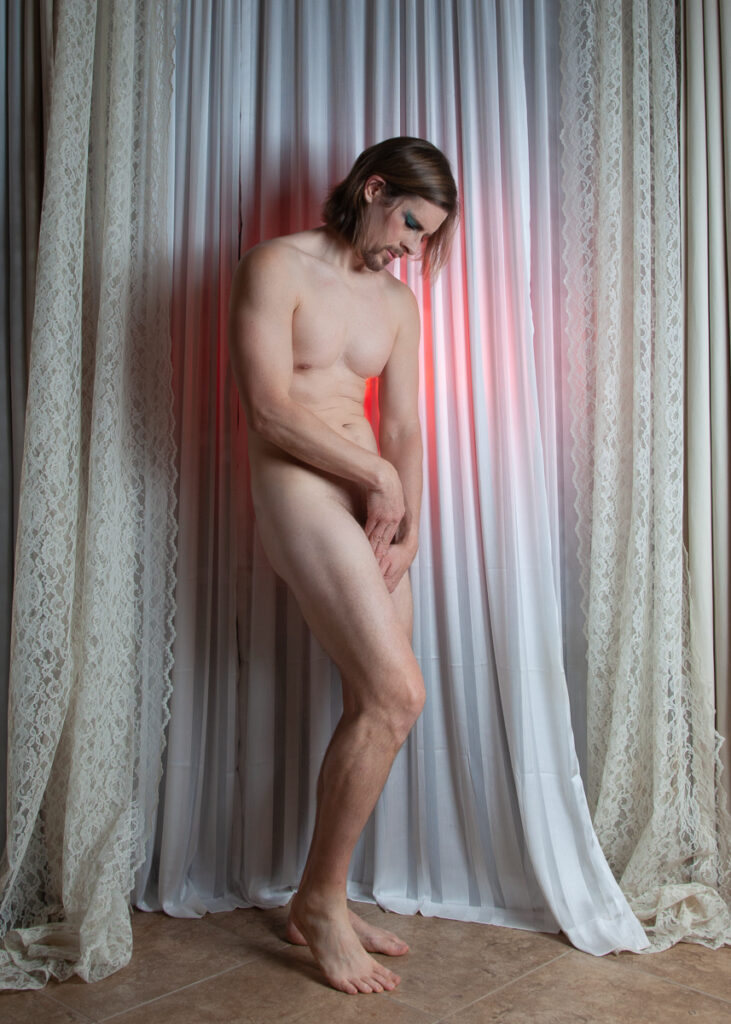We live in times when gender is a construct open to question, fluidity, analysis, and change. What is male? What is female? If you don’t feel comfortable with the sex you’re born into, you can change it. If you want to marry your own kind, it’s the law of the land that you are free to do so. Cross dressing seldom raises eyebrows anymore, and a drag queen like Ru Paul is almost as big a celebrity as Dolly Parton (who already looks like the conventional stereotype of a drag queen).
Nonetheless there is something unsettling about Tim Best’s photographic explorations of the self, in which he often imagines himself as the object of the infamous “male gaze,” a central tenet of feminist theory used to critique traditional media representations of the female character in cinema and other visual mediums. Best is an attractive, straight, hunky guy who enjoys playing contact sports and looks like he might be perfectly at home in the pages of GQ. But for some of his series of films and photos, he dons traditional female attire, often considered sexy or fetishistic, to examine what he calls “the simple changing of perspective from looking outward to looking inward.”
Ever since his undergraduate days, the artist has been no stranger to controversy. As a photography minor at the University of Illinois, he made a documentary about his parents’ divorc—and the subsequent collapse of their home–that didn’t go down too well with the family. He learned, though, “a feeling of awe that photography could evoke certain emotions.”
Nonetheless he quit making art for several years and didn’t get back into it till around 2003. Since completing his MFA at Southern Methodist University in Dallas, where he studied with feminist artist and theorist Mary Walling Blackburn, he has been exclusively concerned with self-portraiture and with the concept of “gender identity, gender perversion, or what people think of as perversion.”
In the series presented here, called “Poser,” Best says, “I’m investigating my desire for the feminine by using myself as the object. It’s a simple change of perspective from looking outward to looking inward.” It’s a tricky game he’s playing, as the works may provoke bafflement, outrage, or laughter. Says his dealer in Dallas, Liliana Bloch, “By glorifying vitality and the beauty of the human body, he forces me to explore and open new doors, debunking puritanical taboos of pleasure, power, and desire.”
Top: Pique-Nique (2020), archival inkjet print, 4 by 5 inches
